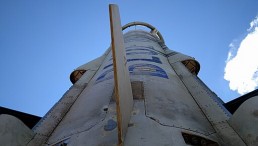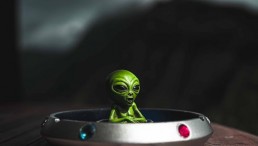![China's Chang'e 6 Moon Mission Appears to Include an Undisclosed Mini Rover [See Photos] China's Chang'e 6 Moon Mission Appears to Include an Undisclosed Mini Rover [See Photos]](https://1721181113.rsc.cdn77.org/data/images/full/53548/chinas-change-6-moon-mission-appears-to-include-an-undisclosed-mini-rover-see-photos.jpeg?w=820)
(Photo : Wikimedia Commons/Shujianyang)
China Academy of Space Technology (CAST ) released new photos of Chang'e. 6. However, many noticed that there seemed to be a baby rover affixed to the side of the lander, which had yet to be mentioned prior to the sighting.
CAST Releases New Photos of China's Chang'e 6
China's National Space Administration gave an update about its newest moon mission, which launched last week on a Long March 5 rocket. The agency said that it successfully entered the Moon's orbit. The spacecraft is expected to land early next month.
However, in the published photos, Andrew Jones, a correspondent at SpaceNews who has been tracking China's space program, noticed a small rover attached to the side of the lander. It was too small for the long-term mission.
Jones noted that in a post from the Shanghai Institute of Ceramics (SIC) under the Chinese Academy of Sciences (CAS), the small vehicle could be carrying an infrared imaging spectrometer.
This isn't the first time China has incorporated extra spacecraft into its space missions. A string of well-timed shocks was offered by China's Tianwen-1 Mars. While in transfer orbit, it first launched a disposable spacecraft to take images of the Tianwen-1 orbiter traveling through deep space toward Mars.
As part of the project, the Zhurong rover descended a camera on the Red Planet. This took pictures of the rover in pose and sent them to Zhurong via WiFi. Then, when in orbit around Mars, the Tianwen-1 spacecraft performed the same operation with a second detached camera.
Yeah, okay. That looks like a previously undisclosed mini rover on the side of the Chang'e-6 lander lol. Via CAST: https://t.co/gS0Jy5L9hw pic.twitter.com/9vvTnribpl
— Andrew Jones (@AJ_FI) May 3, 2024
Chang'e 6 Moon Probe
Chang'e 6 mission seeks to retrieve samples from the lunar far side that include material that has been expelled from the lunar mantle to shed light on the past of the Moon. The project builds upon China's Chang'e-5 2020 sample return mission, but it is more ambitious.
These days, there is a lot of interest in the lunar south pole, primarily due to the likelihood of water ice trapped in shadowed craters there that could change the course of history. Water reserves might significantly increase the viability of lunar homes and possibly be utilized as fuel for space missions that travel further into the Solar System. Other domains, though, may provide answers to fascinating and significant scientific queries.
One of these is the enormous South Pole-Aitken (SPA) basin, an enormous old impact basin that spans a sizable area of the Moon's far side. The 2,500-kilometer (1,600-mile) diameter SPA basin was formed more than 4 billion years ago, has an intriguing composition, and may provide views into the Moon's interior.
But getting to the far side is difficult. All except one of China's Chang'e-4 soft landings have taken place on the near side of the Moon, which is constantly facing Earth. Chang'e-4 was designed as a backup for the Chang'e-3 nearside lander and rover mission in 2013.
Chang'e-6 is intended to contribute fresh material, possibly comprising basalts of various ages, from a new region of the Moon to advance our knowledge of our celestial neighbor. The prospect of obtaining unique lunar material that was extracted from the Moon's depths by the impact of the SPA basin is even more fascinating to planetary and lunar scientists. This material could offer previously unobtainable insights into the Moon's early history and evolution, as well as that of the Earth and the larger Solar System.
RELATED ARTICLE: China Announces Spacecraft Name That Will Take Astronauts on the Moon
Check out more news and information on Space in Science Times.












![Mars Faces Three Times More Potentially Hazardous Asteroids Than Earth [Study]](https://1721181113.rsc.cdn77.org/data/thumbs/full/53711/258/146/50/40/mars-faces-three-times-more-potentially-hazardous-asteroids-than-earth-study.jpeg)

